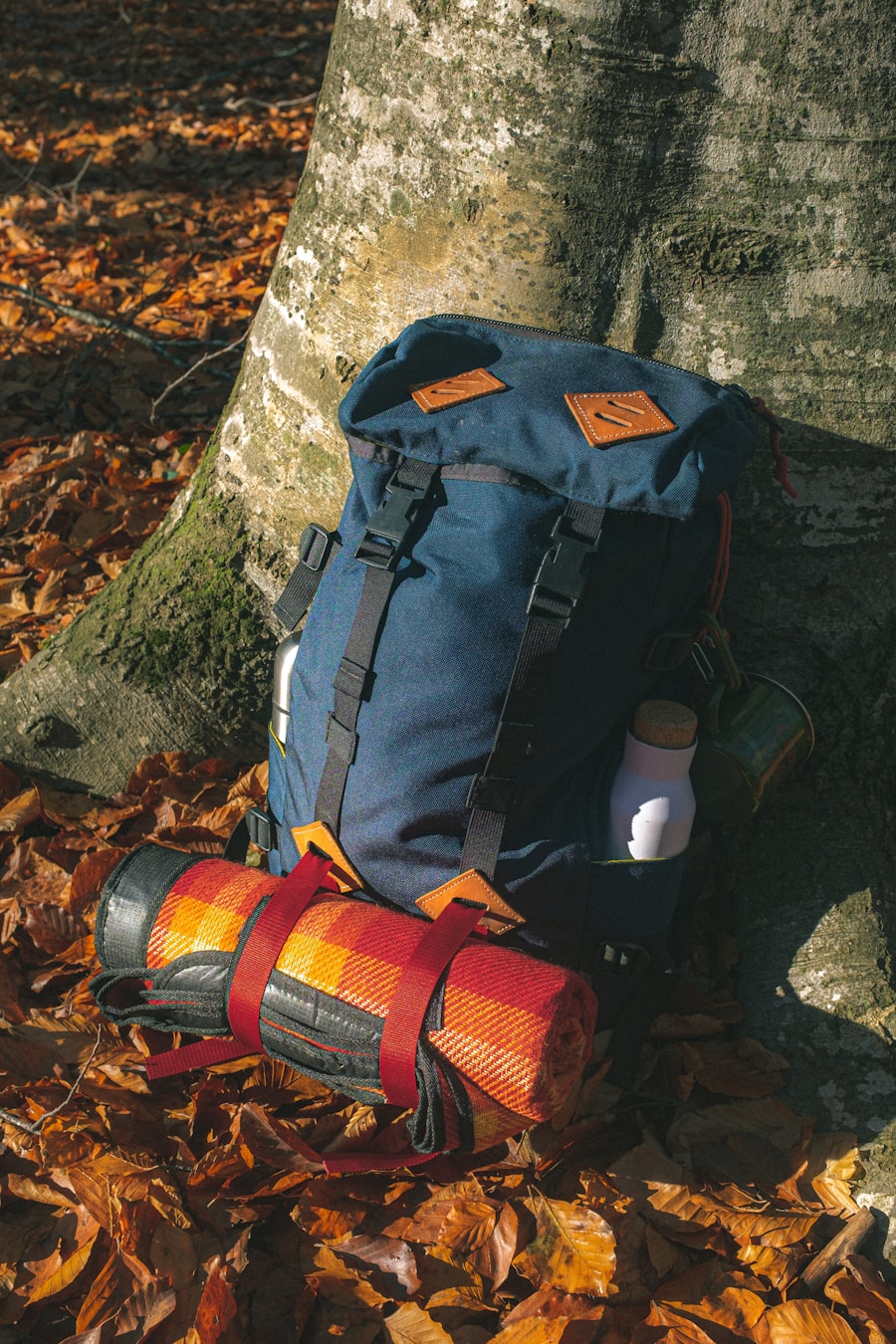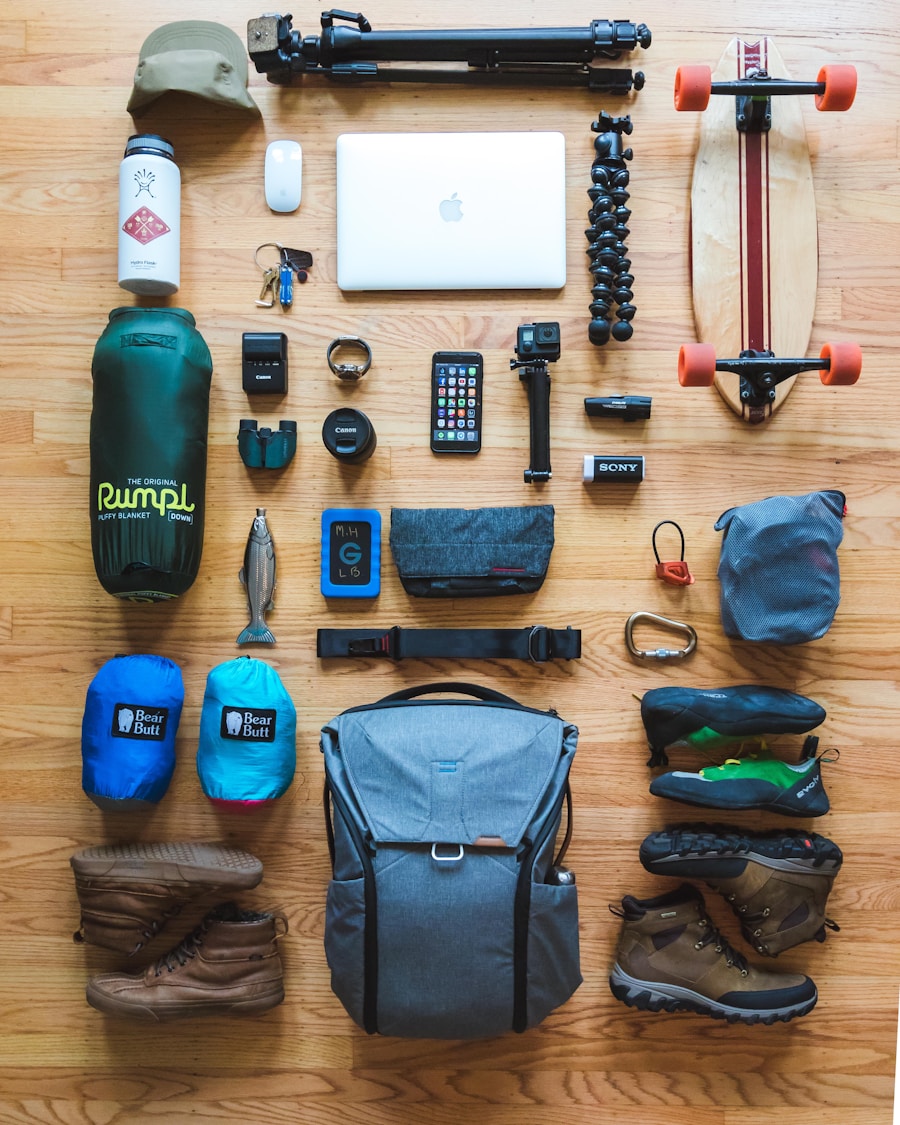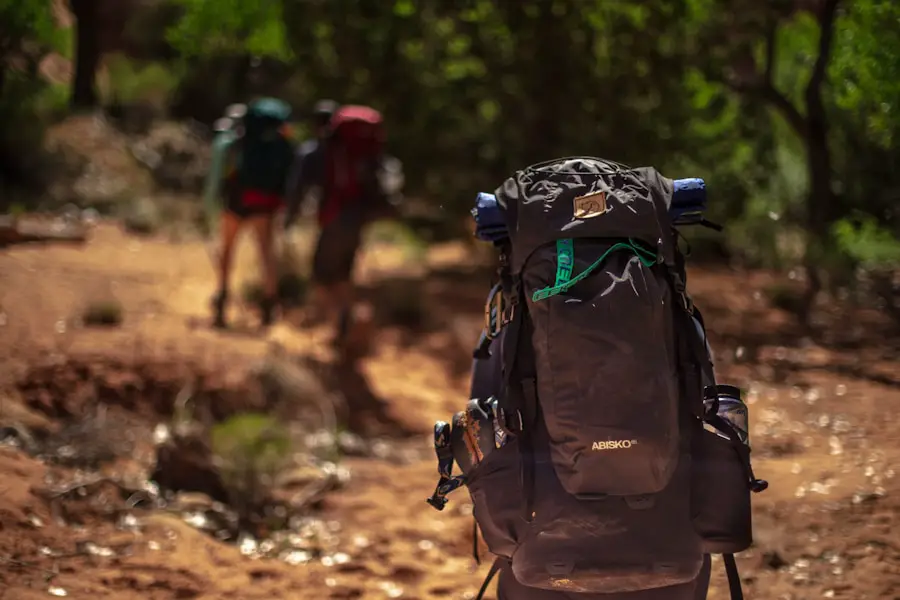Preparation is the cornerstone of any successful outdoor adventure, whether it be a day hike, a multi-day backpacking trip, or an expedition into the wilderness. The unpredictability of nature can pose numerous challenges, and being adequately prepared can mean the difference between a memorable experience and a dangerous situation. Understanding the environment you will be entering, including its weather patterns, terrain, and potential hazards, is crucial.
For instance, a hiker venturing into the Rocky Mountains must be aware of the possibility of sudden weather changes, altitude sickness, and wildlife encounters. By researching these factors ahead of time, adventurers can equip themselves with the necessary knowledge and gear to navigate these challenges effectively. Moreover, preparation extends beyond just understanding the environment; it also involves mental readiness.
A well-prepared individual is not only equipped with the right tools but also possesses the confidence to handle unexpected situations. This mental fortitude can be cultivated through experience and education. For example, participating in wilderness survival courses or first aid training can enhance one’s ability to respond to emergencies.
When individuals are mentally prepared, they are more likely to remain calm under pressure, make sound decisions, and ultimately ensure their safety and that of their companions.
Key Takeaways
- Being prepared is crucial for any outdoor adventure, so make sure to plan ahead and pack accordingly.
- Choosing the right footwear is essential for comfort and safety, so invest in a good pair of hiking boots or trail shoes.
- Layering your clothing is key for all weather conditions, so pack versatile and moisture-wicking clothing.
- Navigation tools like maps, compasses, and GPS devices are essential for staying on track and finding your way in the wilderness.
- Staying hydrated and well-nourished is important for energy and endurance, so pack plenty of water and high-energy snacks.
Choosing the Right Footwear
Footwear is one of the most critical components of outdoor gear, as it directly impacts comfort, stability, and safety during any outdoor activity. The right pair of shoes or boots can prevent blisters, provide necessary support, and enhance traction on various terrains. When selecting footwear, it is essential to consider the specific conditions of the environment you will be traversing.
For instance, if hiking in wet or muddy conditions, waterproof boots with good grip are essential to maintain traction and keep feet dry. Conversely, lightweight trail runners may be more suitable for dry, well-maintained paths where speed and agility are prioritized. Fit is another crucial aspect when choosing footwear.
Ill-fitting shoes can lead to discomfort and injuries such as blisters or sprains. It is advisable to try on footwear with the socks you plan to wear during your activities and to walk around in them to ensure they provide adequate support without being too tight or too loose. Additionally, considering the type of terrain is vital; for rocky or uneven surfaces, shoes with reinforced toe caps and sturdy soles can offer protection and stability.
Investing in high-quality footwear tailored to your specific needs can significantly enhance your overall outdoor experience.
Clothing and Layering for All Conditions

The clothing you choose for outdoor activities plays a pivotal role in your comfort and safety. The principle of layering is fundamental in outdoor clothing, as it allows for adaptability to changing weather conditions. The base layer should be moisture-wicking to keep sweat away from the skin, which helps regulate body temperature.
Fabrics such as merino wool or synthetic materials are excellent choices for base layers due to their breathability and quick-drying properties. The middle layer serves as insulation and should retain heat while allowing moisture to escape. Fleece jackets or insulated vests are popular options that provide warmth without adding excessive bulk.
Finally, the outer layer acts as a barrier against wind, rain, and snow. Waterproof and breathable jackets made from materials like Gore-Tex are ideal for protecting against the elements while allowing perspiration to escape. This three-layer system enables adventurers to adjust their clothing based on activity level and environmental conditions, ensuring comfort throughout their journey.
Navigation Tools and Techniques
| Navigation Tools and Techniques | Usage | Effectiveness |
|---|---|---|
| GPS | 95% | High |
| Compass | 70% | Medium |
| Map and Chart Reading | 60% | Low |
| Sextant | 5% | Low |
Navigating through unfamiliar terrain requires a combination of tools and techniques to ensure safety and direction. Traditional navigation methods include using a map and compass, which remain invaluable skills in an age dominated by GPS technology. Understanding how to read topographic maps can provide insights into elevation changes, water sources, and potential hazards.
A compass complements this knowledge by helping hikers orient themselves in relation to their surroundings. In addition to traditional navigation tools, modern technology offers various applications that can enhance navigation capabilities. Smartphone apps designed for outdoor navigation often include features such as offline maps, waypoints, and tracking capabilities.
However, reliance solely on electronic devices can be risky due to battery life limitations and potential signal loss in remote areas. Therefore, it is advisable to carry both traditional tools and modern technology while being proficient in using them independently. Practicing navigation skills before embarking on a trip can build confidence and ensure that adventurers are prepared for any situation.
Hydration and Nutrition
Maintaining proper hydration and nutrition is essential for sustaining energy levels during outdoor activities. Dehydration can lead to fatigue, decreased cognitive function, and even serious health issues in extreme cases. It is crucial to drink water regularly throughout the day rather than waiting until thirst sets in.
Carrying a hydration system such as a water bladder or water bottles allows for easy access while on the move. Additionally, understanding how much water is needed based on activity level and environmental conditions can help prevent dehydration. Nutrition plays an equally important role in outdoor preparedness.
Consuming a balanced diet rich in carbohydrates, proteins, and healthy fats provides the necessary fuel for physical exertion. Lightweight snacks such as trail mix, energy bars, or jerky are convenient options that offer quick energy boosts during breaks. For longer trips, planning meals that are easy to prepare yet nutritious is vital; dehydrated meals or pre-packaged options can save time while ensuring adequate caloric intake.
By prioritizing hydration and nutrition, adventurers can maintain their stamina and enjoy their outdoor experiences fully.
First Aid and Emergency Supplies

Accidents can happen at any time during outdoor activities, making it imperative to carry a well-stocked first aid kit tailored to your specific needs. A basic first aid kit should include items such as adhesive bandages, antiseptic wipes, gauze pads, adhesive tape, pain relievers, and any personal medications required by group members. Additionally, including items like blister treatment supplies and insect repellent can address common issues faced in the wilderness.
Beyond a first aid kit, having emergency supplies can significantly enhance safety during outdoor excursions. A whistle can be an effective signaling device in case of emergencies, while a multi-tool or knife can serve various purposes from food preparation to gear repair. A fire-starting kit is also essential for warmth and cooking in survival situations.
Furthermore, carrying a space blanket or emergency bivvy can provide critical protection against hypothermia if stranded overnight. Being equipped with these supplies not only prepares adventurers for minor injuries but also equips them to handle more serious emergencies effectively.
Shelter and Protection from the Elements
When venturing into the outdoors, having adequate shelter is crucial for protection against unpredictable weather conditions. Depending on the duration of your trip and the environment you will be in, options range from tents to hammocks or tarps. Lightweight backpacking tents are popular among hikers due to their portability and ease of setup while providing essential protection from rain and wind.
In addition to traditional shelters, understanding how to create improvised shelters using natural materials can be invaluable in emergency situations. Techniques such as building a debris hut or using fallen branches can provide temporary refuge if one becomes lost or stranded. Furthermore, considering insulation from the ground is vital; sleeping pads or insulated blankets can help retain body heat during cold nights.
By preparing for shelter needs ahead of time and understanding various options available, adventurers can ensure they remain safe and comfortable regardless of environmental challenges.
Other Essential Gear for Safety and Comfort
Beyond the fundamental gear discussed previously, several additional items contribute significantly to safety and comfort during outdoor activities. A reliable headlamp or flashlight is essential for navigating after dark or during low-light conditions; choosing models with adjustable brightness settings can extend battery life while providing adequate illumination when needed. A good-quality backpack designed for your specific activity ensures that gear is organized efficiently while distributing weight evenly across your body.
Features such as padded straps, hip belts, and multiple compartments enhance comfort during long treks. Additionally, carrying trekking poles can provide stability on uneven terrain while reducing strain on joints during descents. Personal items such as sunscreen and sunglasses should not be overlooked; protecting skin from UV rays is crucial during prolonged exposure outdoors.
Similarly, insect repellent helps ward off pests that can cause discomfort or transmit diseases.
By considering these additional essentials alongside primary gear choices, adventurers can create a comprehensive kit that enhances both safety and enjoyment during their outdoor pursuits.If you’re looking to enhance your hiking experience, you may also be interested in investing in some high-quality gear for your travels. One essential item to consider is a durable and reliable golf travel bag, which can be found in this article on the best golf travel bags. Additionally, a portable white noise machine for travel can help you relax and get a good night’s sleep while on the go, as discussed in this article about portable white noise machines. And don’t forget to pack a pair of odor-resistant Merino wool travel socks to keep your feet comfortable and dry during your outdoor adventures, as highlighted in this article on Merino wool travel socks.
Love travel? Join Our Facebook Community For More Tips.
FAQs
What are the 10 essentials for hiking?
The 10 essentials for hiking are a list of items that are recommended to bring on every hike to ensure safety and preparedness in the outdoors.
What are the 10 essential items for hiking?
The 10 essential items for hiking include navigation tools (map and compass), sun protection (sunglasses and sunscreen), insulation (extra clothing), illumination (headlamp/flashlight), first-aid supplies, fire (waterproof matches/lighter/candles), repair kit and tools, nutrition (extra food), hydration (extra water), and emergency shelter.
Why are the 10 essentials for hiking important?
The 10 essentials for hiking are important because they help hikers be prepared for unexpected situations and emergencies while out on the trail. They can help ensure safety and survival in the wilderness.
Where can I find the 10 essentials for hiking?
The 10 essentials for hiking can be found in outdoor retailers, camping stores, and online. Many outdoor organizations and hiking websites also provide lists and recommendations for the 10 essentials.
Are the 10 essentials for hiking the same for all types of hikes?
The 10 essentials for hiking are a general guideline and can be adjusted based on the specific conditions and length of the hike. For example, a longer or more remote hike may require additional supplies, while a shorter day hike may require fewer items.
